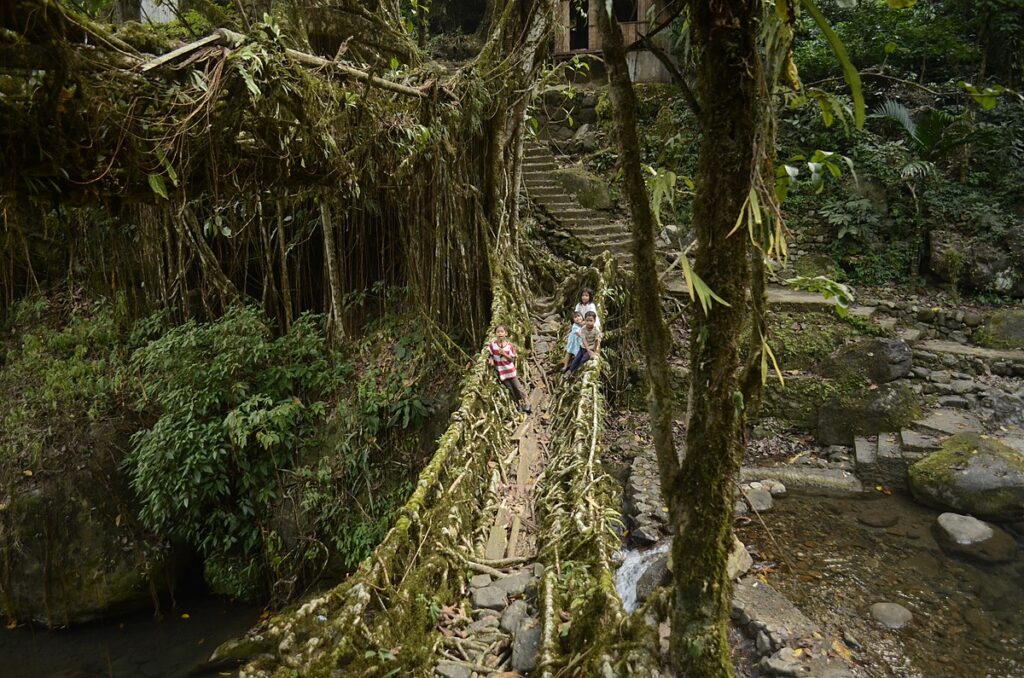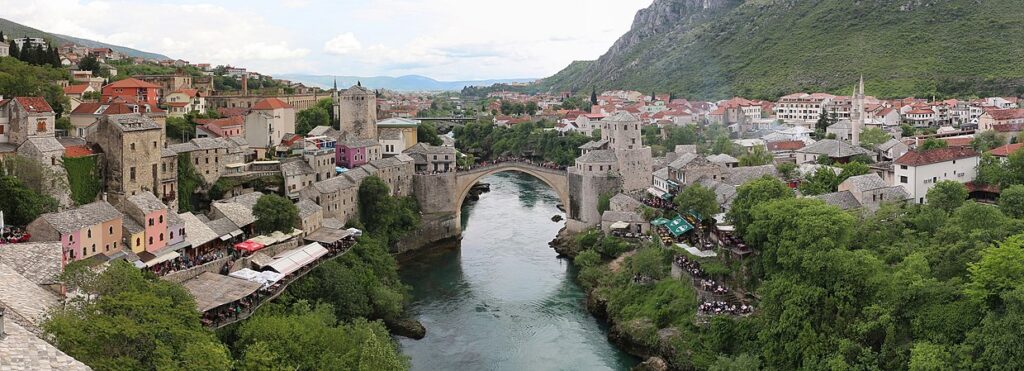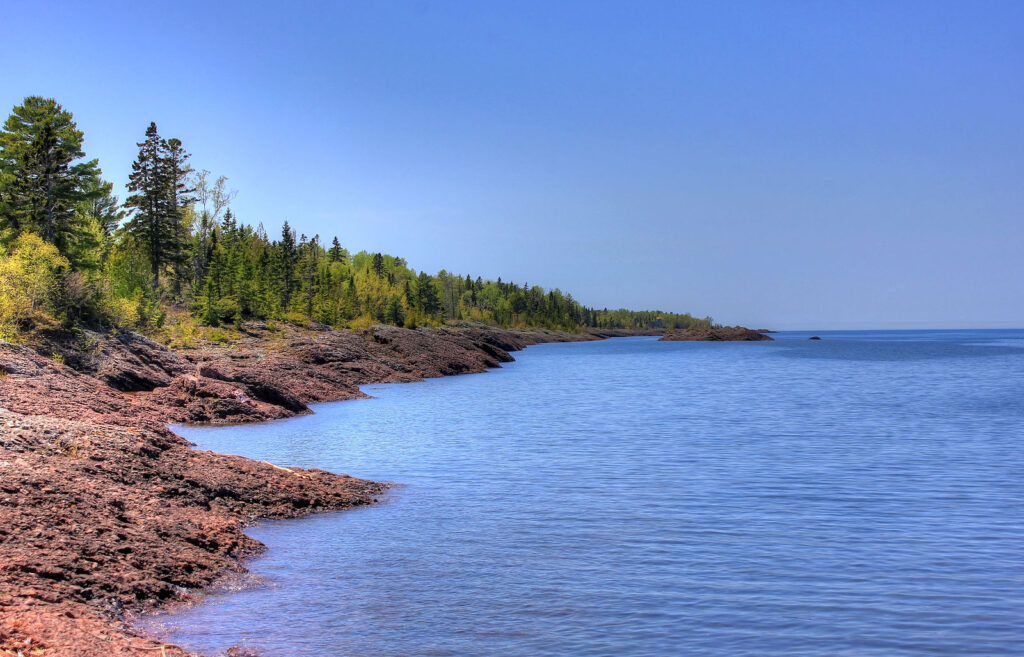I have stood helpless, as have many others, beside wild, swollen rivers gesturing madly to figures on a far bank, voice all but drowned by thrashing water and distance. It is a primal scene as old as humankind, one that we have for millennia fought to remedy with rafts, dugout canoes, ferries but most emphatically with bridges. An exemplar from childhood of these attempts to bind together opposing banks of a river are the curious, living-root bridges of NE India. There, Khasi artisans learned how to take the aerial roots of rubber-fig trees on opposing riverbanks, knitting them together as living cables slung above the current. Artfully joined, these suspension bridges would grow in strength, sometimes lasting hundreds of years as foot traffic passed unhindered through mountain valleys from bank to bank.

Soon after its completion in 1957 I happened to pass under the magnificent Mackinac Bridge (Michigan) in a trans-Atlantic freighter bound for Chicago along the St. Lawrence Seaway. That bridge is hardly recognizable as a descendant of the homely root bridges of monsoon Asia. But my father, who once fancied himself a civil engineer, made sure we had pride of place on the upper deck as our vessel drew near the majestic Mackinac spans. It looked for all the world like the masts of the ship would slice the bridge in half as we passed below. But someone had stayed up late with a slide rule and maritime charts, and we slipped safely through.

the preserve of aboriginal canoes. As many as 11,000
vehicles a day thunder across the straits that can be
hazardous to trucks and motorcyclists during high winds.
photo credit: Justin Billau
Having traversed the Upper Peninsula this spring, our road route brought us to that arresting sight that joins the two very distinct halves of Michigan – the north with a prickly near-to-nature streak, jealous of its forests, its bracing air and lakes; the south flexing its political and industrial muscle, home to cutting edge academia and big-boy/girl sports. The south taking only condescending notice of its boreal, snowmobile-loving cousins. It can make for combustible conversation. (See preceding blog post with map.)
Stopping in a blueberry café at the north terminus of the bridge we gathered some of its backstory: the stream of RVs streaking northwards across the straits, escaping to springtime campgrounds along the Lake Superior shore, hundreds of them navigating the five-mile (8 km.) span for a mere $5. The lore of the bridge includes one, Leslie Ann Pluhar, who on a rainy Friday evening in Sept., 1989, plunged off the bridge in her ‘87 Yugo falling 170 feet into the water below, disappearing beneath the waves. The story, a horror from deepest midnight, featured on the front pages of national papers as her Detroit family suffered ghastly public fascination. https://www.chicagotribune.com/news/ct-xpm-1989-10-03-8901190020-story.html

But worthy of pondering more carefully still is the reaction elicited by the bridge among those who suffer from gephyrophobia – fear of bridges. As many as 1000 drivers a year approach the Mackinac span with growing anxiety. Something about the height of its structure, that thin ribbon of road suspended over open water, sends them into psychic disarray. Inner strength having fled, they stop before the bridge, incapable of proceeding. But the savvy attendants at the bridge are fully prepared for such an eventuality. They will call a confident soul to take the wheel, even while, as embarrassed owner, you crouch trembling in the back seat, and will safely conduct you to the far end wishing you a ‘vaya con dios’ as you gratefully resume your traipse.
This homely trope possesses a depth beyond the straits of Mackinac. Just as we find ourselves divided in our families, communities and nations by politics, old enmities, suspicion and the unknown, we may fear the bridges offering passage to the other side. What embarrassment or mishap might overtake us on that fragile bridge? What of the fierce winds that sweep the deck? Will the toll exceed our resources? What awaits on the far shore? Will grace and stamina equal the demands of that encounter? Will we find ourselves marooned, unable ever to return?
It may come as a strand of hope to know that there are attendants at such bridges, too, who navigate them freely and ably, whose calling and practice it is to usher the traipser safely to the far side. Like those living strands of rubber-fig roots that, knitted deftly together and slung over the divide, offer reliable passage to a far shore. It is a passage that spans – and can gladden – the generations.



So interesting! We’ve gone over the Mackinac Bridge, and other large bridges a number of times. I had no idea any had someone who could drive people to the other side if very scared! a wonderful lesson about caring for others!
Hi, Jeannie! I thought after writing my piece, I’d love to interview a stand-in driver; stories of compassion and hilarity waiting in that corner, for sure! During years in the Congo I heard about a pastor with an aged Peugeot who would stop at every decrepit bridge and walk the breadth of the (wobbly) wooden structure with a hammer assuring that every spike was firmly driven home with a triumphant cry, ‘Praise the Lord!’ Great to hear from you!
I have gypherophobia – but never knew the name for it! Big barrier for me – like driving into Charleston SC. I keep thinking I fell off a bridge in a previous lifetime…the fear is very real – but so far I have managed. If someone else is driving it’s not quite so bad – in fact I love to see the Mighty Missisipp and other great rivers. Thanks for the insights.
Hello, Barbara! Good of you to respond with your personal story! I’d love to have heard you unfold it in detail before writing my piece. It appears that despite your trepidations, you’ve enjoyed the charms of Charleston, and elsewhere ‘beyond the bridges’. Crossing in the face of fears has its rewards! Shalom!
Was that aged Peugeot a 1964, model 403, perchance? Or do I just imagine you’re talking about the fine auto I bought from that pastor?
Those of us who are proud to be Yoopers by birth or marriage, celebrate this bridge for its majestic beauty and storied history. We are also pleased that it separates us from the trolls of Michigan below the bridge. We do acknowledge that many of them are worthy of our respect and affection — but will not acknowledge it publically while eating a pastie. Yous betcha ehh.
Gabriel
Jonathan,
Interesting piece, another in a long series that draws on your vast acquaintance with the world and your keen observation of it. I now have two new words in my vocabulary — gypherophobia and youper. How long either of them will reside there is in doubt. Where did you dredge up gypherophobia? It has not made an appearance in either my venerable Oxford American dictionary or the one that Apple kindly supplies with my new computer.
Hello, neighbor! Good of you to take the trouble to check in! For that pretentious term, try, ‘gephyrophobia’. Easy to get some sneaky vowels out of order. Given how frequently this occurs at the Mackinac, I felt assured that by now some clever soul had formally framed it. Didn’t take long. We’ll have tea again someday soon!